Winter gives gardeners some time to think. We become green thumb philosophers. Here are some random thoughts:
By: Deputy Director, Museum Operations and Gardens Perry Mathewes
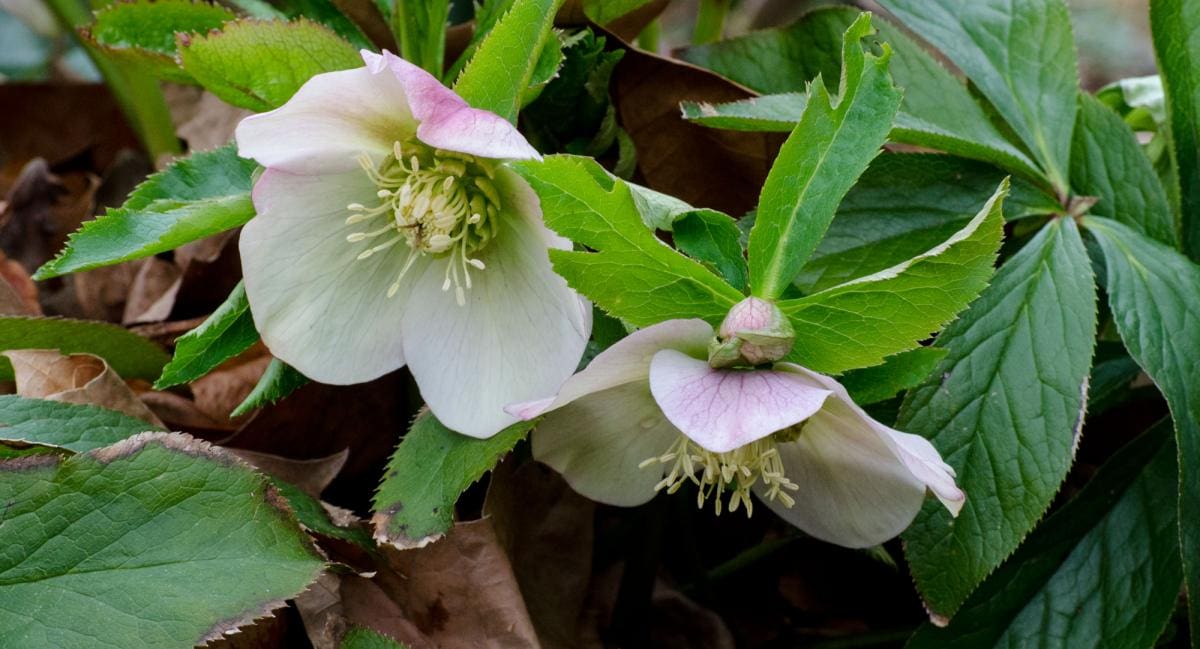
Hellebores are one of the few winter-flowering plants we have in the garden.
Actually, they are not so random, but our blog set up requires us to have a “hook” at the top for aggregators and social media. Sometimes a story takes a while to unfold and the punch line shouldn’t be first. So here goes the real story.
Its winter at the MSV and the garden is closed for the season – January through March. There are obvious reasons for this. Most plants don’t have their pretty reproductive parts on display, so our visitation drops dramatically. Staffing our garden with gatehouse attendants, security, etc. doesn’t really make sense for the 5 people who like to be out in cold dreary weather. When snow or freezing rain coats the garden, keeping our rabbit warren of paths clear and safe is next to impossible. You get the idea. Of course, on the random warm day, people want to come out, but we just don’t know when that will happen. The garden can be quiet in the winter. Except it’s not.
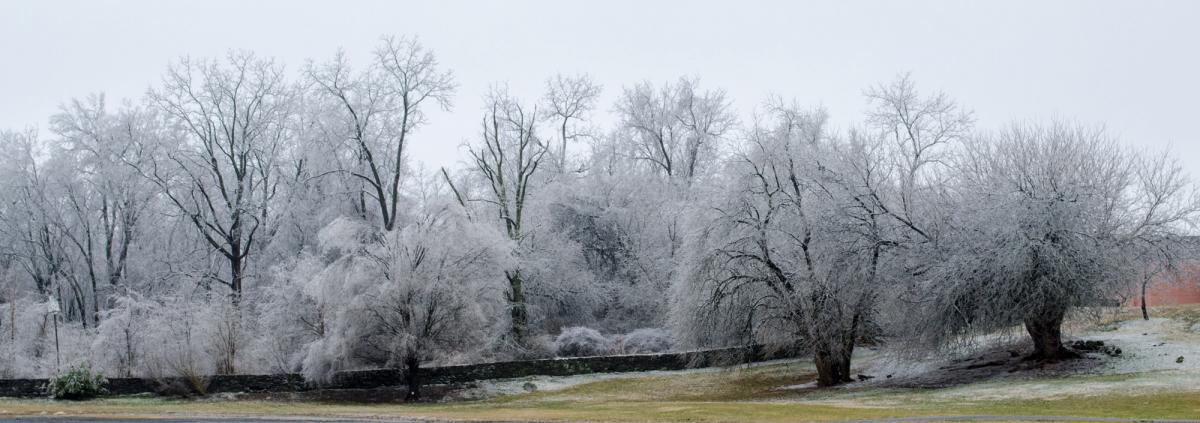
Ice coats trees along the edge of the South Lawn.
It is this time of year that garden staff often works on large messy projects that might get in the way of visitors. Tree work is scheduled (this year we prune the massive elms behind the house), hardscape renovations occur (we completed the installation of permeable pavers in the Spring Garden last week) and improvements are made (new lamp posts around the entrance circle of the house). This winter we’ve even taken on clearing the bamboo grove so a whole new garden space will be ready for visitors when we reopen in the spring.
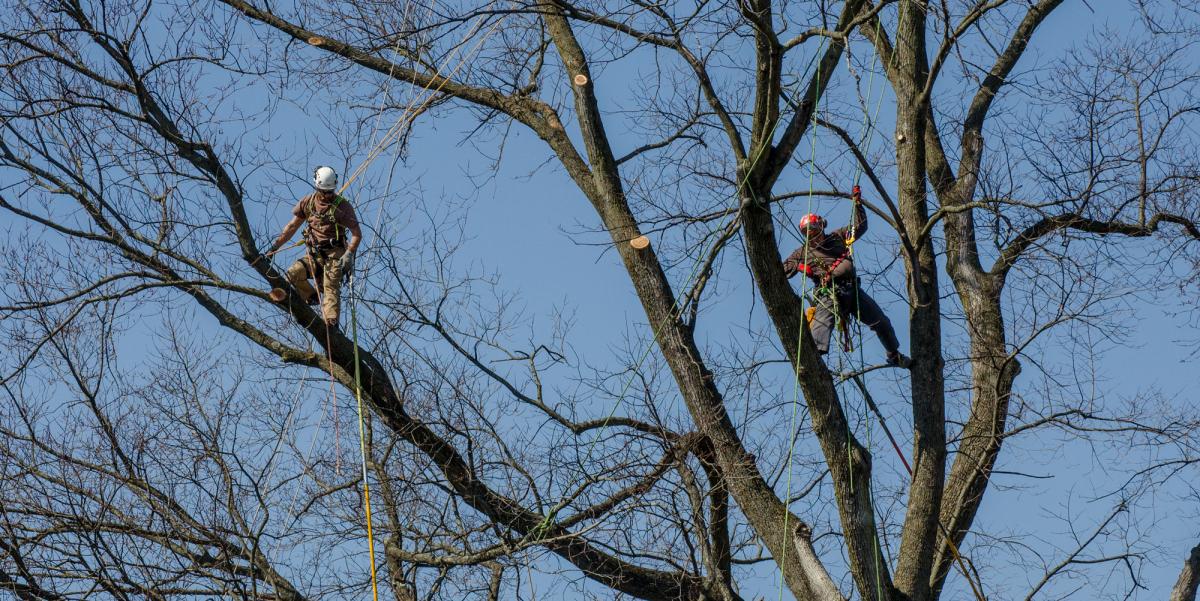
Pruning elms in March.
One of our winter tasks also requires the staff to prepare for the summer gardens. Nothing is better on a cold, dreary winter day to be inside, looking at seed and plant catalogs with pencil in hand, dreaming of a hot July garden full of flowering plants. (Of course, when that steamy, hot July day rolls around, you wish for a few degrees cooler). Designs gradually come together, orders are placed and the march to summer begins. But this was all done in January. So now staff are busy rebuilding chainsaws, sharpening mower blades, and tuning up engines on all our equipment.
This is the time for the gardener to get philosophical. Kind of like the pre-TV, pre-smartphone days when our early ancestors were sitting around a fire looking up at those burning balls of gas in the night sky and wondering how we fit in this universe philosophical. Why does this garden exist (other than it was created by our benefactor)? What is its purpose? Why are we spending all this time to care for this space? What does this have to do with the Museum of the Shenandoah Valley?
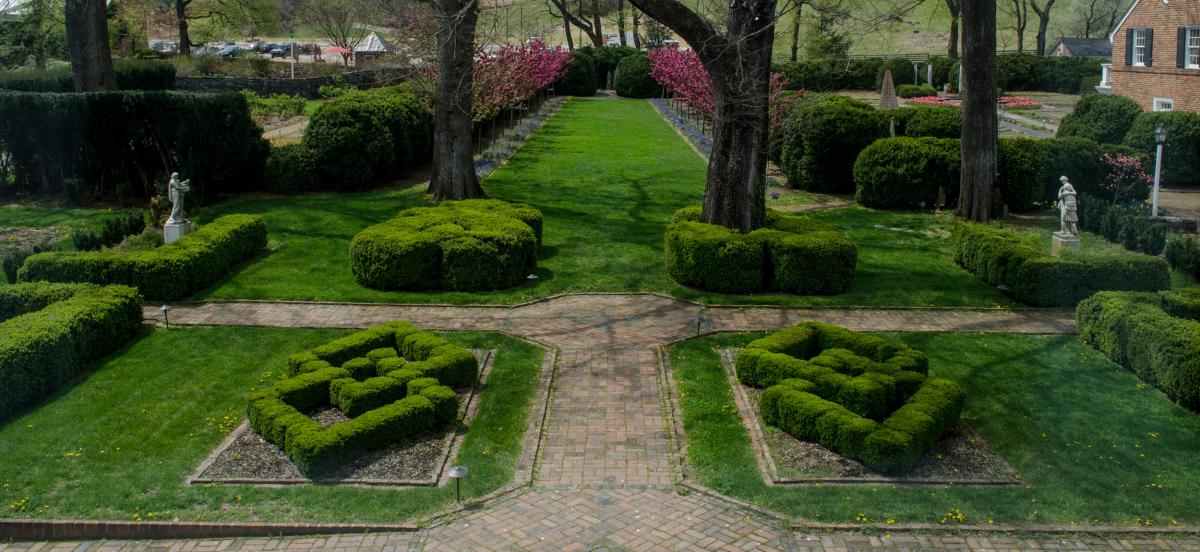
Grand Allee in the spring.
Many people approach the garden as if it is something separate from the rest of the museum. Come see art, look at some historical artifacts and then, by the way, as you head out the door, stop by the pretty garden on the way to your car. Is it really an afterthought? I don’t think so, but if art lovers discover our gardens, that’s a win for me. Others come to see the garden first, having a strong interest plants or the environment and then head inside to stop at the restroom. While there, they might as well see what else we have and realize that there is some cool stuff in the exhibit hall. Is the garden a gateway drug to art? I hope so. Either way, the garden is not a separate entity, it is an integral part of this museum. Whether you see it first or last, it is an exhibit like the other exhibits we share. Except it’s not.
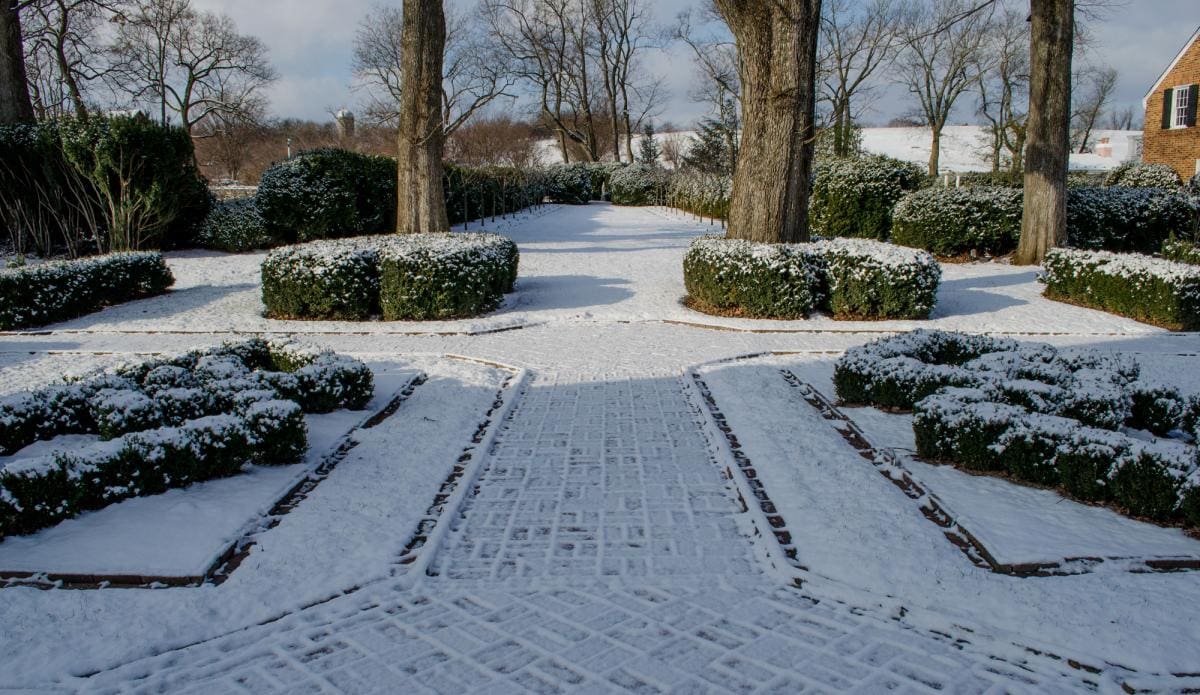
Grand Allee in the winter.
The garden is a four-dimensional exhibit. Walk into any of our galleries to see an exhibit and you are in a three-dimensional space. The objects mounted in the exhibit are three dimensional. Even the “two-dimensional” art (paintings, prints, photos, etc.) has some depth to it. For the most part, these images and artifacts are static. They don’t change. At least, that is the desire of the curators, registrars and conservators. In the garden, though, everything is changing all the time. The plants are growing, budding, flowering, and even dying. Weather changes the garden every moment. Wind pushes plants around, raindrops fall, the sun shines, and the light is different at morning, noon, and evening. The seasons change and with it the garden. This is Monet’s Rouen Cathedral series in real time. Every day, this exhibit is different just by the virtue of being. And we have no climate control.
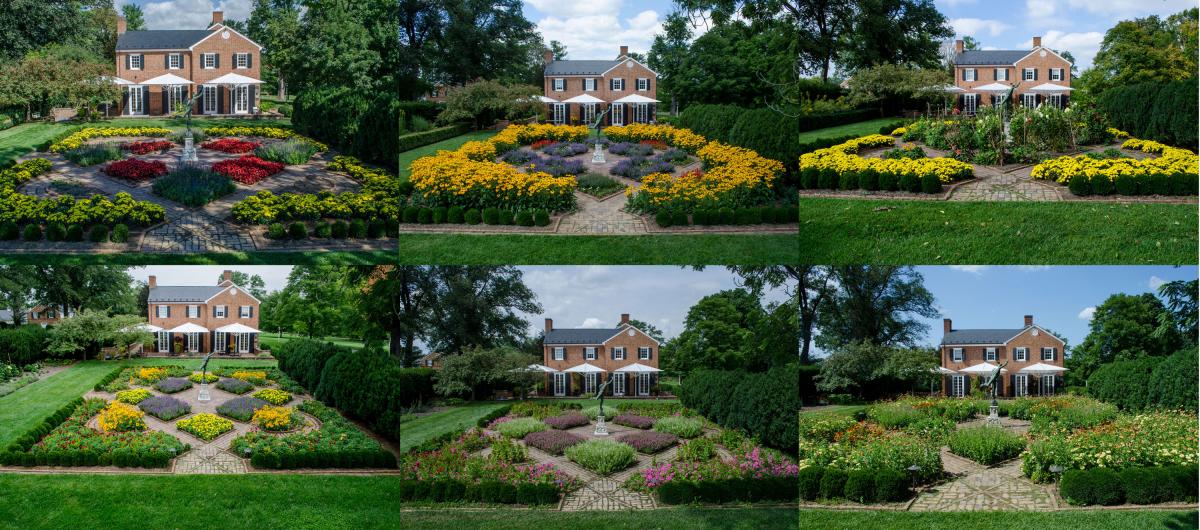
The Parterre Garden for the last six summers. L-R, top row: 2014, 2015, 2016; bottom row: 2017, 2018, 2019.
But to be an exhibit, it is more than just a pretty place. It is space to inspire, to spark discussion, to gather with friends and others in the community. The garden rooms are set up like tableaus that have an aesthetic appeal, but they are also sources of learning and inspiration. Educational programs are created using this exhibit as source material. See how these plants can grow and are planted together and consider doing the same in your own garden. Find out what trees grow well in Shenandoah Valley soil. It may be a very subtle way to learn about the Valley’s natural history, but it is a pleasant process.
So, you can see how the landscape and the galleries are linked. One is a continuation of the other and they support and reinforce the same goal. To preserve and enrich the cultural life and heritage of the Valley.
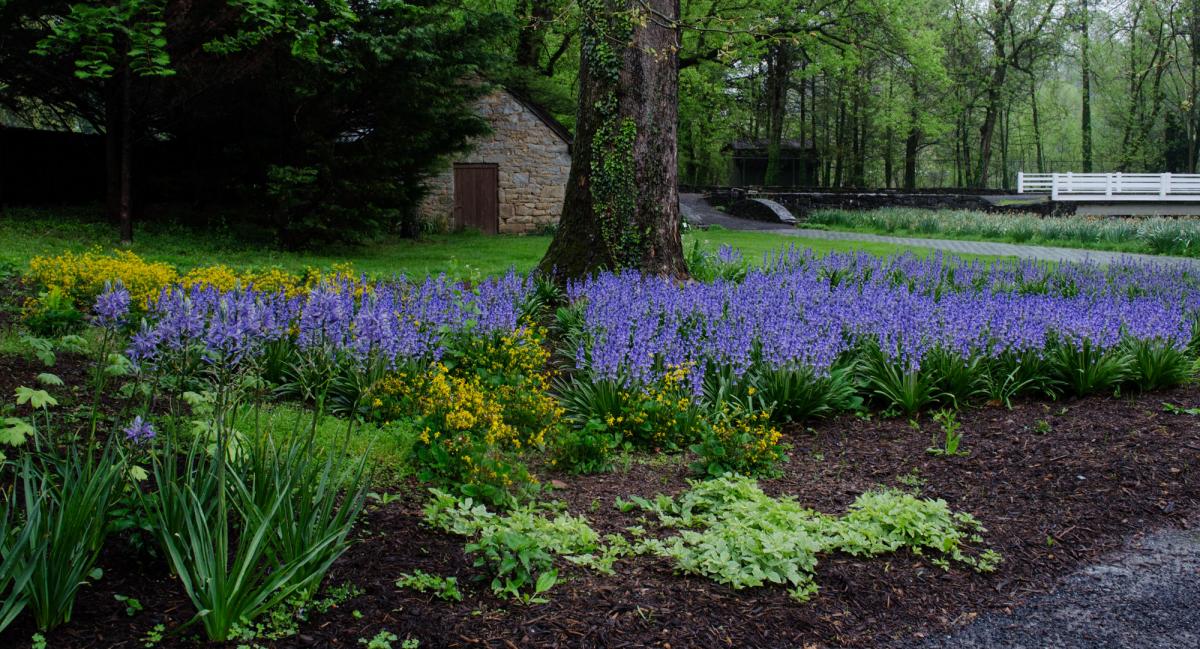
Spring flowering Spanish bluebells in Kathie’s Spring Garden.
As spring approaches and the business of gardening outdoors fills our minds with to-do lists and must-tend-to tasks, I hope you remember to come see ALL the exhibits at the MSV. And the best part, the garden is the one exhibit where you can bring your food and drink. In fact, we have a whole garden with food in it. So, come sit in our exhibit and picnic. You may even be inspired to re-create Georges Seurat’s A Sunday Afternoon on the Island of La Grande Jatte. We just ask you don’t try to duplicate Edouard Manet’s Dejeuner sur L’Herbe. You get the pointillist.

Visitors enjoying a picnic on the lawn.
Final note: pretty pictures are included because we all know you will read and enjoy a blog more that has lots of garden photos.
Mark your calendar the MSV gardens open for the 2020 season on April 1 at 10:00 a.m.